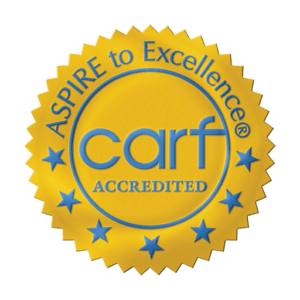Personal Experience in Schizophrenia Treatment Programs
Having spent over two decades at Alta Loma, working closely with patients suffering from complex mental health issues, I’ve seen the profound impact that well-designed schizophrenia treatment programs can have. Our approach focuses on a diverse range of therapies tailored to individual needs. Medication management is essential, but it’s the holistic therapies that often make the most marked difference in a patient’s life, such as cognitive behavioral therapy and community integration efforts.
Our facility emphasizes the importance of treating not just the symptoms, but also the underlying factors contributing to schizophrenia. This method often involves close family involvement, aiming to create a support system that extends beyond our treatment facility. The transformation I’ve witnessed in our residents underscores the critical nature of comprehensive and compassionate care in schizophrenia treatment programs.
Elements of Effective Schizophrenia Treatment Programs
An effective schizophrenia treatment program is a mosaic of several therapeutic modalities. At Alta Loma, we prioritize the following key elements:
- Medication Management: Using both typical and atypical antipsychotics to stabilize symptoms.
- Therapeutic Interventions: Incorporating cognitive behavioral therapy to address thought patterns and behaviors.
- Family Therapy: Engaging family members to foster a supportive home environment.
This multi-tiered approach ensures patients receive personalized care, which significantly enhances recovery outcomes. It’s crucial to remember that each patient’s journey is unique, and flexibility within the program is essential to cater to their evolving needs.
How Can We Improve Schizophrenia Treatment?
One of the pressing questions in mental health care is how to enhance schizophrenia treatment programs effectively. Collaboration between psychiatric professionals and cutting-edge research institutes offers promising opportunities. Here are some steps:
- Integrate Technology: Utilize telehealth services to extend care reach, especially in remote areas.
- Focus on Early Intervention: Develop early detection programs that allow for timely intervention.
- Invest in Community-Based Treatments: Create resources for continued care outside hospital settings.
- Enhance Education and Training: Educate caregivers and healthcare providers about the latest treatment protocols.
By focusing on these areas, we can create more robust schizophrenia treatment programs that better serve those in need.
What Qualifies as a Schizophrenia Treatment Programs Emergency?
A schizophrenia treatment programs emergency often involves sudden and severe exacerbation of symptoms that pose a threat to the patient or others. Immediate intervention is crucial.
Indicators of such emergencies might include intensified hallucinations or delusions, increased agitation, or any indication that the patient is a danger to themselves or others. In these cases, contacting a mental health crisis team or emergency services should be a priority. Prompt professional intervention can prevent escalation and help the individual stabilize, providing a bridge to ongoing care and support.
Innovations in Schizophrenia Treatment Programs
Advancements in medical technology and research continue to shape new paths in schizophrenia treatment programs. One exciting development is the integration of genetic research, aiming to tailor medication more effectively to individual genetic profiles. This personalization can significantly reduce adverse effects and improve patient compliance.
Moreover, virtual reality is making its mark as a therapeutic tool, offering patients immersive environments to practice social skills and manage anxiety triggers safely. Progress in these areas promises to redefine traditional approaches and facilitate more effective outcomes for those affected by schizophrenia.
At Alta Loma, we are committed to embracing these technological innovations, ensuring our treatment programs remain at the forefront of mental health care.
Finally, strong emphasis on nutritional guidance in our programs has yielded encouraging results. By addressing diet and its impact on mental health, patients often experience improved cognitive function and mood stability, vital components of effective schizophrenia treatment programs.
What unique elements can personal experiences bring to the design of effective schizophrenia treatment programs?
Personal experiences in schizophrenia treatment programs provide invaluable insights that shape the design and delivery of care. At Alta Loma, our experience in working with individuals facing severe mental health challenges like schizophrenia has shown us the profound impact of holistic and personalized approaches. For example, a resident might initially present with severe symptoms, feeling isolated and misunderstood. Through tailored therapies that involve medication management and community integration efforts, we’ve seen individuals transform, finding stability and a sense of belonging. This highlights the importance of addressing both symptoms and underlying contributors, such as family dynamics and personal history. By integrating personal stories and firsthand observations, treatment programs can become more empathetic and responsive, ensuring that each patient receives care that resonates with their unique journey.
What key elements should a comprehensive schizophrenia treatment program include to ensure effective outcomes?
A comprehensive schizophrenia treatment program should incorporate a diverse array of therapeutic modalities to address the complex needs of each individual. At Alta Loma, we prioritize elements such as medication management, cognitive behavioral therapy, and family engagement. Medication management involves using both typical and atypical antipsychotics to stabilize symptoms effectively. Cognitive behavioral therapy helps patients manage thought patterns and behaviors, while family therapy fosters a supportive home environment. These components, combined with flexible and personalized care, are critical in enhancing recovery outcomes. Each patient’s journey is unique, requiring a program that can adapt to evolving needs while focusing on long-term stability and integration into society.
How can schizophrenia treatment programs be improved to better serve individuals with the disorder?
Improving schizophrenia treatment programs involves embracing innovation and collaboration across multiple fronts. One effective strategy is integrating technology, such as telehealth services, to reach underserved areas. Early intervention programs are crucial for timely diagnosis and treatment, potentially altering the course of the disorder. Community-based treatments can provide continued support outside of hospital settings, ensuring that individuals have access to resources and care in their everyday environments. Additionally, enhancing education and training for caregivers and healthcare providers about the latest protocols can significantly impact care quality. By focusing on these areas, programs can offer more comprehensive and effective support, ultimately leading to better outcomes for those affected by schizophrenia.
What constitutes a schizophrenia treatment program emergency, and how should it be addressed?
A schizophrenia treatment program emergency arises when there is a sudden and severe escalation of symptoms posing a threat to the individual or others. Common indicators include intensified hallucinations or delusions, increased agitation, or signs of self-harm or harm to others. In such situations, it is crucial to contact a mental health crisis team or emergency services to provide immediate intervention. This rapid response can prevent further escalation and help stabilize the individual. The goal is to provide a temporary bridge to ongoing care and support, ensuring the individual’s safety and continuity of treatment.
What are some recent innovations in schizophrenia treatment programs that hold promise for the future?
Recent innovations in schizophrenia treatment programs are transforming the landscape of care. One notable advancement is the integration of genetic research, which aims to tailor medication to individual genetic profiles, reducing adverse effects and improving compliance. Additionally, virtual reality is emerging as a powerful therapeutic tool, enabling patients to practice social skills and manage anxiety triggers in a safe environment. At Alta Loma, we recognize the potential of these technologies to redefine traditional approaches, offering more personalized and effective treatment options. Furthermore, a focus on nutritional guidance has shown encouraging results, highlighting the importance of addressing diet’s impact on mental health. These innovations promise to enhance the quality of care and outcomes for individuals with schizophrenia.
Community integration plays a pivotal role in the effectiveness of schizophrenia treatment programs by providing individuals with the necessary support and resources to thrive outside of clinical settings. At Alta Loma, we emphasize community integration efforts to help individuals develop social skills, build relationships, and find meaningful roles in their communities. By engaging in community activities and services, patients often experience reduced isolation and improved self-esteem. This approach not only aids in the recovery process but also helps individuals maintain stability and prevent relapse. Imagine a resident who, through community integration, finds purpose in volunteering or participating in local events, leading to enhanced well-being and a sense of belonging. Ultimately, community integration fosters holistic healing and sustainable lifestyle changes, which are essential for long-term recovery.
What are common misconceptions about schizophrenia treatment programs, and how can they be addressed?
One common misconception about schizophrenia treatment programs is that medication alone is sufficient for managing the disorder. While medication is crucial for symptom stabilization, comprehensive care involves multiple facets, including therapy, family support, and community integration. At Alta Loma, we understand the importance of a holistic approach that addresses the whole person rather than just the symptoms. Another misconception is the belief that people with schizophrenia cannot lead fulfilling lives. With proper treatment and support, many individuals manage their symptoms effectively and pursue meaningful careers and relationships. Addressing these misconceptions requires education and awareness, showcasing success stories and illustrating the transformative potential of well-rounded treatment programs. Encouraging open discussions and sharing personal experiences can also help dispel myths and foster understanding and empathy.







